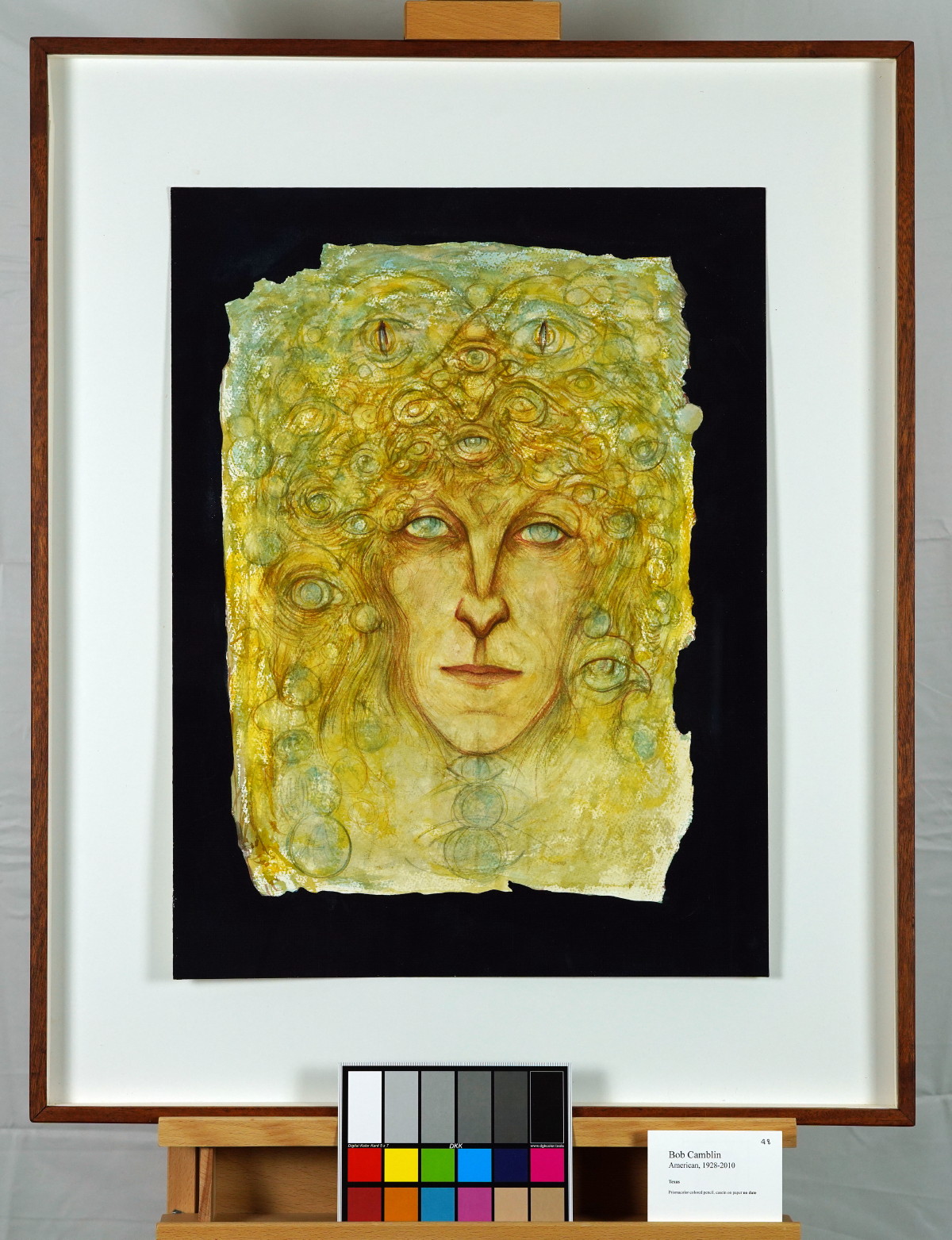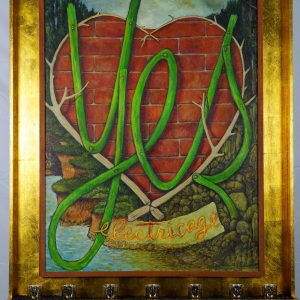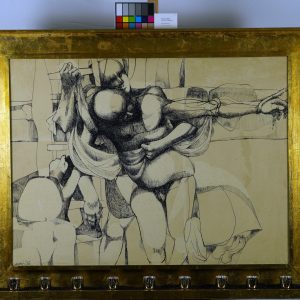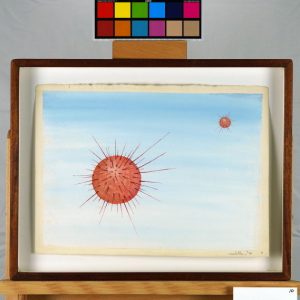Description
Texas, no dateColored pencil/casein on Arches
Signed A (what’s the reason for this?)
23.5 x 17.5 in. (image)
32.5 x 26.5 (frame)
original, includes certificate of authenticity from ArtTrust
The painting “Texas” presents a mythical figure with a face surrounded by swirling, ethereal textures resembling hair or energy. The figure’s face is symmetrical and elongated, featuring numerous eyes both within and around the hair-like surroundings, adding a sense of omniscience and otherworldliness. The colors are dominated by shades of gold and yellow, with hints of green, creating a sense of divinity and illumination.
In Zen, the concept of “seeing” often transcends physical sight and refers to perceiving the nature of reality itself. The multiple eyes in the artwork could symbolize an awakening or enlightenment that allows one to see beyond conventional perspectives. The face, calm and composed, reflects a meditative state where one’s true nature becomes visible. The artwork may suggest the idea of interconnectedness and the universal mind that perceives all without attachment.
The image can be associated with Hexagram 20, “Guan” (Contemplation or Viewing). This hexagram emphasizes the importance of observing one’s surroundings and inner self to gain clarity and wisdom. The multiple eyes represent different facets of perception, hinting at the need to look within as well as outward. The luminous quality of the artwork aligns with the idea of enlightenment that arises from contemplation.
The artwork merges themes of mysticism, perception, and transcendence. The swirling textures and multiple eyes evoke an image of a being that embodies spiritual insight, transcending ordinary human experiences. It suggests a connection to higher consciousness, where seeing is not limited to the physical but extends to deeper understanding and awareness of the interconnected nature of reality. The use of golden hues reinforces the idea of illumination and divine vision.
The portrayal of eyes in spiritual or symbolic art dates back to ancient cultures, such as the “Eye of Horus” in Egyptian mythology, symbolizing protection and healing. Similarly, surrealist artists like Salvador Dalí often used eyes as a motif to explore the subconscious. This piece shares a connection with visionary art, which seeks to depict transcendent experiences and mystical states. The style also recalls elements of Symbolism, where dream-like imagery and allegorical subjects are used to evoke emotions and abstract concepts.
*Shipping cost will vary, please inquire at sales@camblingallery.com before purchasing.
Currently ships from Oregon, USA
Member of artnet? Apply for a discount! Inquire about intergallery and permanent loans for museums.
“Texas” was featured in his Yes Retrospective
Reproductions of this drawing are available in multiple sizes!
Click here to use our high-resolution viewer!
This artwork is available with a non-fungible token to ensure traceability and transparency of provenance.
The royalty factor – Unlike traditional artworks, such as paintings, mosaics, statues, and the like, NFTs can be programmed to provide royalties to you every time the painting (and token) is sold and resold – for eternity. That mind-bending Camblin you sold could be worth millions one day and provide income for your great-great-great grandkids!
Anti-forgery – The central idea underpinning NFTs is that they are built on the blockchain, which is meant to offer advanced security. Think of it like an un-erasable and un-avoidable copyright.
Easy authentication – Another compelling aspect of NFT art and NFTs in general is the ability to quickly and easily authenticate items, as the record of ownership is scrupulously kept on the blockchain.





